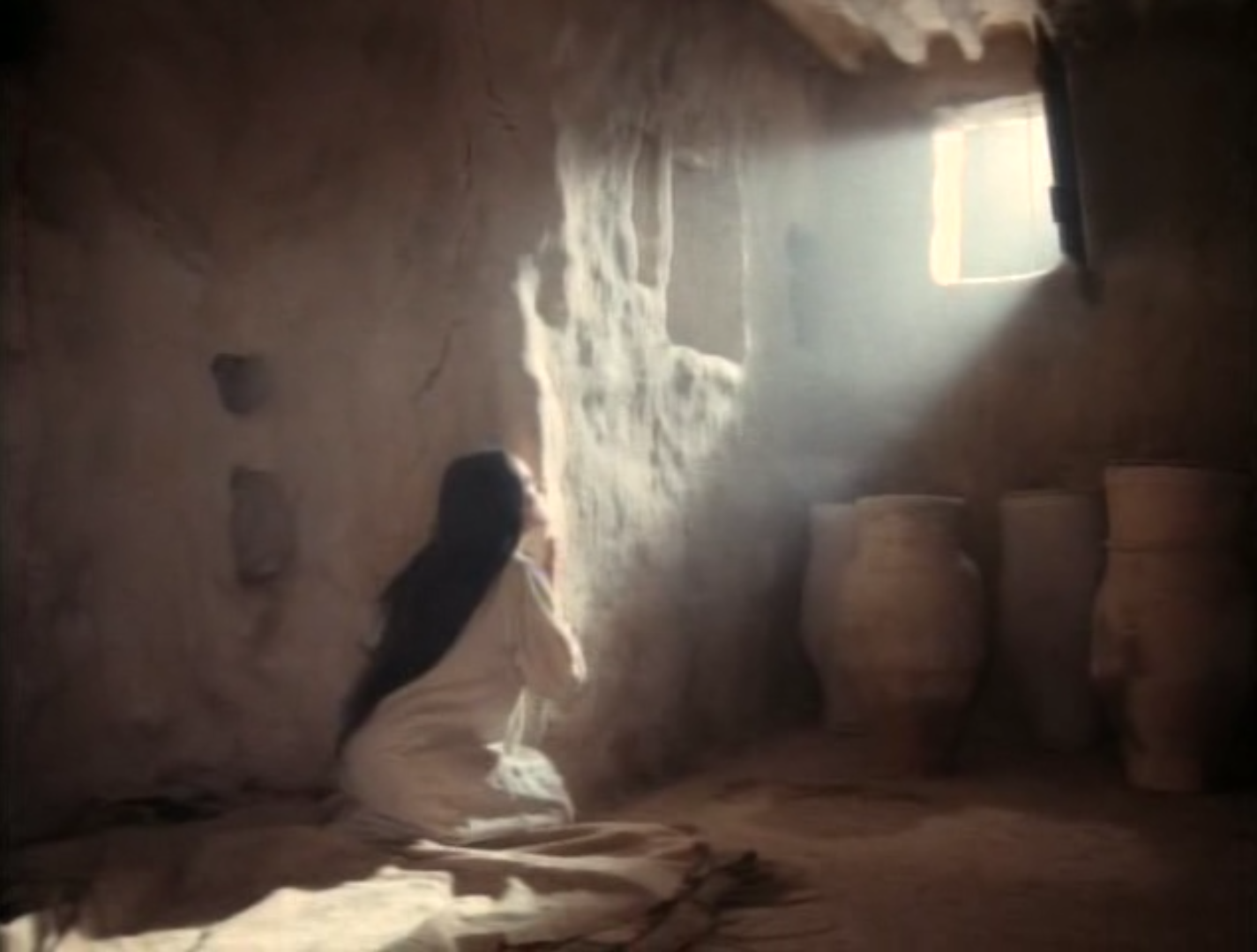The Annunciation is one of the most visually arresting scenes in the film, not only because of Hussey's portrayal of an initially confused but ultimately devoted young woman, but also because of the striking choice not to have an actor playing the angel Gabriel. Indeed the name "Gabriel" is not even mentioned and the viewer sees Mary as her mother Anna sees her -- it is one half of a conversation in front of light that is pouring in through the window.
Mary awakes at the sound of the window opening, and the light pouring in, and in a point-of-view shot, Mary looks up to see the window:
As she stands before the window, she converses with the angel, but the viewer, like Anna, sees only one half of the conversation:
And ultimately, Mary kneels in obedience to the angel's message in front of the window:
Here is a clip of the scene:
Jesus speaks the words Talitha Cumi (Mark 5.41) and the girl rises. The picture is beautifully composed with light coming in all three windows, and Jesus and Jairus's daughter either side of the middle window:
Incidentally, when the girl is hugged by Jesus, we have a rare shot of Robert Powell smiling with his eyes closed:
The same three-window motif occurs again when Jesus is teaching in the temple (in a scene that is only in the full, over six hour version, and not the abridged version currently found on Netflix):
Jesus is teaching in the temple while a large crowds sits, gazing in wonder, and Zerah (Ian Holm) watches from the sidelines. The dialogue itself is taken from the Sermon on the Mount. Here, Jesus of Nazareth, like most Jesus films breaks up the sermon, relocates it and redistributes a lot of its material. In a tracking shot, the camera shows Jesus teaching with light streaming in three high windows.
Here is a clip of the piece:
One might also include here one of the films most iconic moments, when Pontius Pilate (Rod Steiger) sees Jesus emerging from the light in his doorway -- Ecce Homo:
Pilate is arrested by the sight of the man in the crown of thorns who has now approached him:










1 comment:
I wonder if the three windows (in the daughter of Jairus scene) are a deliberate reference to the Trinity and the three windows in the legend of Saint Barbara.
Post a Comment